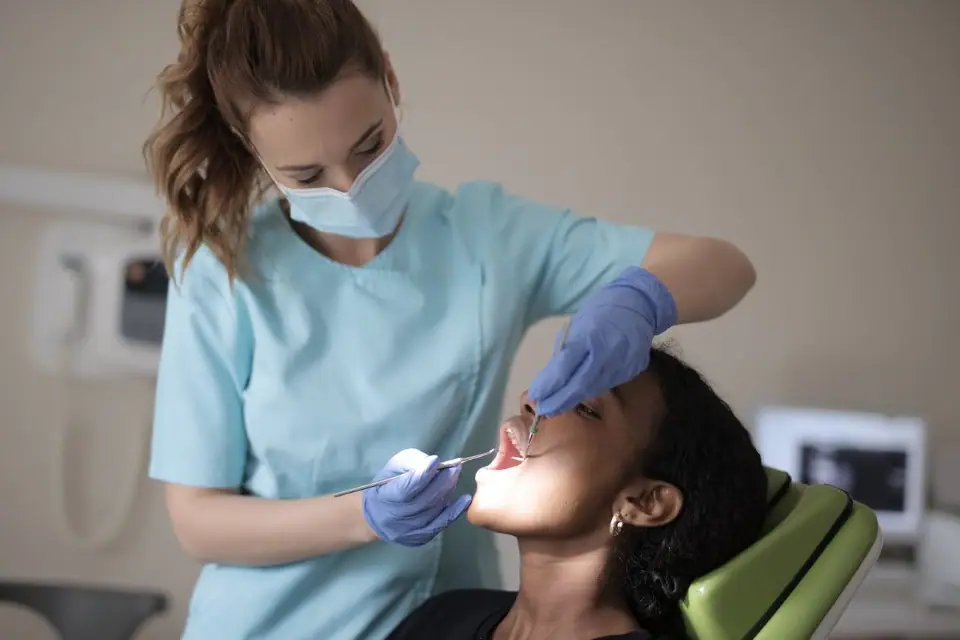Having a tooth extracted can be an unsettling experience. After the procedure, you may notice that the oral surgeon did not place any stitches in the extraction site. This often leads patients to wonder why stitches were not necessary after the tooth removal. There are a few key reasons why stitches may not be placed.
The first factor is the type of extraction performed. Simple extractions of teeth that are fully erupted typically do not require stitches. The oral surgeon is able to cleanly remove the tooth without cutting into the gums. However, impacted or fractured teeth that are deeply embedded in bone and gum tissue will likely need stitches to close the surgical site.
The amount of trauma to the bone and gums also impacts the need for sutures. If the tooth comes out cleanly with little damage to the surrounding tissues, the socket can heal naturally without stitches. However, if extensive flap surgery is performed to access the tooth, the gum tissue will need to be sutured back into place to aid healing.
Finally, the preference and training of the oral surgeon plays a role. Some surgeons prefer to allow sockets to heal on their own, while others routinely place stitches after every extraction. Newer suturing techniques and materials allow for increased healing without stitches in many cases. An oral surgeon may elect not to place stitches if the extraction site looks like it will close up on its own.

While stitches may provide some benefit in select cases, they are not always mandatory. Allowing an extraction site to heal naturally avoids the need to return to have sutures removed. As long as proper post-op care instructions are followed, patients can typically expect good healing even without stitches. However, you should notify your oral surgeon if the extraction site appears open or has not closed after one week. This may indicate that additional treatment is needed for complete healing.
Common Questions About Lack of Stitches After Extractions
Does leaving the socket open increase risk of infection?
In most cases, an open socket will slowly close on its own over the week following the extraction. As long as proper oral hygiene is maintained, including gentle rinsing and use of antiseptic mouthwash, the risk of infection is low. However, if food debris or plaque collect in the open socket, it can impede healing and lead to pain, swelling, and infection.
How can I manage pain and bleeding without stitches?
Using gauze to apply pressure immediately after the extraction can help control bleeding. To manage discomfort, take any prescribed pain relievers as directed. Icing the face for 10-20 minutes several times a day can also relieve swelling and pain. Be sure to avoid disturbing the clot with activities like vigorous rinsing, smoking, and drinking with a straw.
When can I resume normal activities without stitches?
After an extraction without stitches, light activity can often be resumed within 24-48 hours. However, for at least 5-7 days, strenuous exercise, extensive chewing, and other activities that could dislodge the clot should be avoided. Follow all of your oral surgeon’s recommendations to ensure proper, stitch-free healing.

Is there greater risk of dry socket without sutures?
Dry socket occurs when the blood clot at the site of the extraction becomes dislodged too early. While a stitch helps protect the clot, dry socket can still happen even if sutures are placed. To reduce chances of dry socket after an extraction without stitches, follow post-op instructions carefully, limit activity, and avoid behaviors that can displace the clot.
When should I be concerned about slow healing?
If the extraction site is still open after a week, with ongoing bleeding and pain, contact your oral surgeon. This could indicate a problem with the natural clotting process. Stitches or other intervention may be needed to aid healing. Signs of infection like pus, fever, and swollen lymph nodes also warrant a follow-up visit.
In Conclusion
The need for stitches after a tooth extraction depends on several clinical factors, along with provider preference. While sutures offer some benefits in complex cases, many routine extractions heal well without the need to place stitches. Following proper post-extraction care guidelines can support your recovery. Be sure to contact your oral surgeon with any concerns about persistent bleeding, pain, or lack of healing. With the appropriate management, most extraction sites will close up on their own within 7-10 days.

